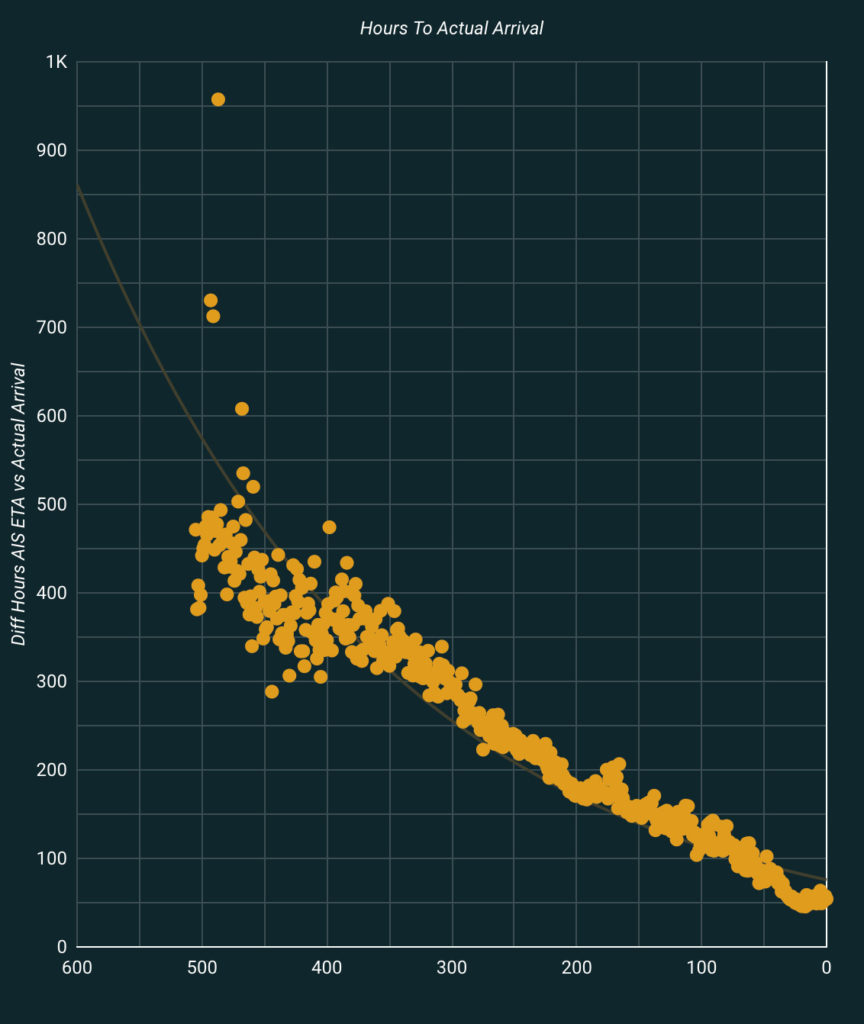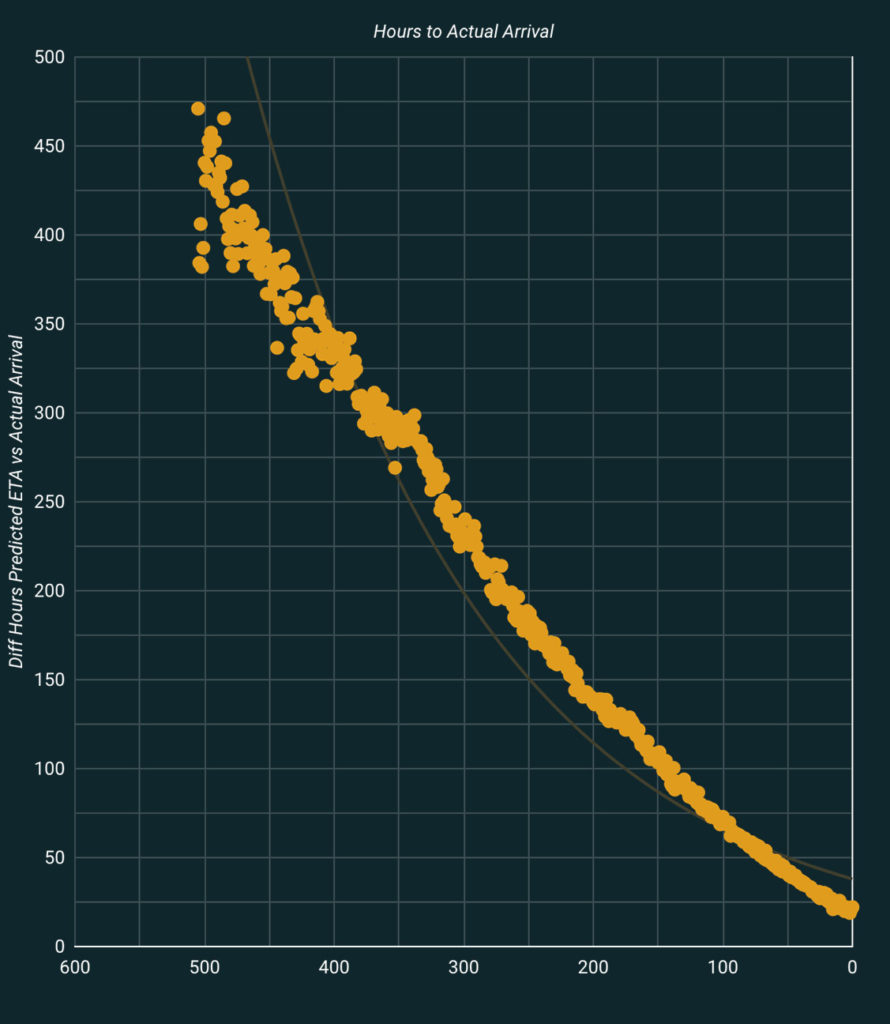How Data Makes Arrival Time Estimating More Dependable – A Study in Timing Arrivals
Interested in this FREE data set?
This is the first of a series as we look at the value predicted routing, predicted port ETA, and port matching can have on maritime operations.
As the COVID-19 pandemic continues to alter the way we live and conduct business, it has highlighted the importance of reacting, adapting, and establishing reliable operations around the globe. The uncertainty of the pandemic has many maritime companies seeking to strengthen operations, bolster business resilience, and focus on risk management. One key way to do this is to maintain accurate vessel timing and know when your vessel will arrive at its destination.
Spire Vessels API contains premium features including port matching, routing, and predicted port ETA. These features bring value to maritime operations in the areas of monitoring and predicting when a vessel is likely to arrive at its destination and be available for commercial services. Accurately timing your route and port arrival is important when building more efficient maritime operations to ensure lower operating costs. Vessel reported ETAs are not always entered and are oftentimes not updated after an adjusted ETA is known. The premium features in Spire’s Vessels API show a ship’s actual arrival at a port allowing companies to make commercial decisions based on real-time data availability.
Maritime operations can use Spire Vessels API premium features to determine if a ship will arrive at a port in time to meet its contractual obligations, like its lay dates for chartered vessels, as well as arrive on time to meet a scheduled berthing slot and book port supply services.
This week’s data story tracks the cargo ship, Nord Sound as it travels through the Pacific Ocean toward Vancouver, Canada and the Serene Ocean as it travels to China. In each case, the calculated ETA using Spire Maritime’s Vessels API predicted ETA determines a more reliable port ETA when compared to using ship reported ETAs.
The chart below plots the difference in hours between AIS reported ETA of vessels and when recognized ships arrive at the destination port. It is the average value for all ships reporting the stated number of hours ahead of the actual time of port arrival (ATA). Note how ETAs become more accurate the closer to arrival the ships are, but the overall trend is still generously ahead of actual arrival in port.

Difference in Hours – AIS ETA vs Actual Arrival In Port
The chart below plots the difference in hours between Spire Predicted ETA of vessels and when recognized ships first arrive at the destination port. It is the average value for all ships reporting the stated number of hours ahead of the actual time of port arrival (ATA).
Note how the trend of accuracy of predicted ETAs is more consistently accurate than the AIS reported ETA and the trend while ahead of actual arrival in port is much closer. This is because the prediction is for arrival in port jurisdiction, probably an anchorage outside the port, where there will often be a wait before the vessels enter port and actually berth.
Vessel Routing Example 1 – Nord Sound
While ETAs are generally given for arrival within port areas, normally at anchorage waiting berthing opportunity, we compared the AIS reported ETA and Spire’s predicted ETA of vessels to identify if there is an advantage.
In this example, on 7-July Nord Sound reports an ETA of 14-July 14:30 and the Spire predicted ETA is given as 16-July 20:00. The ship reported ETA was for the same day when the vessel arrived outside of the Vancouver port area. The Spire predicted ETA, based around observation of previous ship behaviors going to the port, was closer to the actual port arrival time.
Note the tracks shown here are from hourly snapshots of results from Spire Vessels API. The ship reported ETA was for 14-July 03:00, but actual arrival outside of Vancouver was 23:00 and the vessel did not berth until 16-July as predicted by the Spire algorithm.
Vessel Routing Example 2 – SERENE OCEAN
For the vessel Serene Ocean the predicted ETA was shown to match the accurate ship reported ETA, indicating the general accuracy of the Spire algorithm. If the ship had not reported it’s ETA the predicted ETA would have been a reliable alternative.



